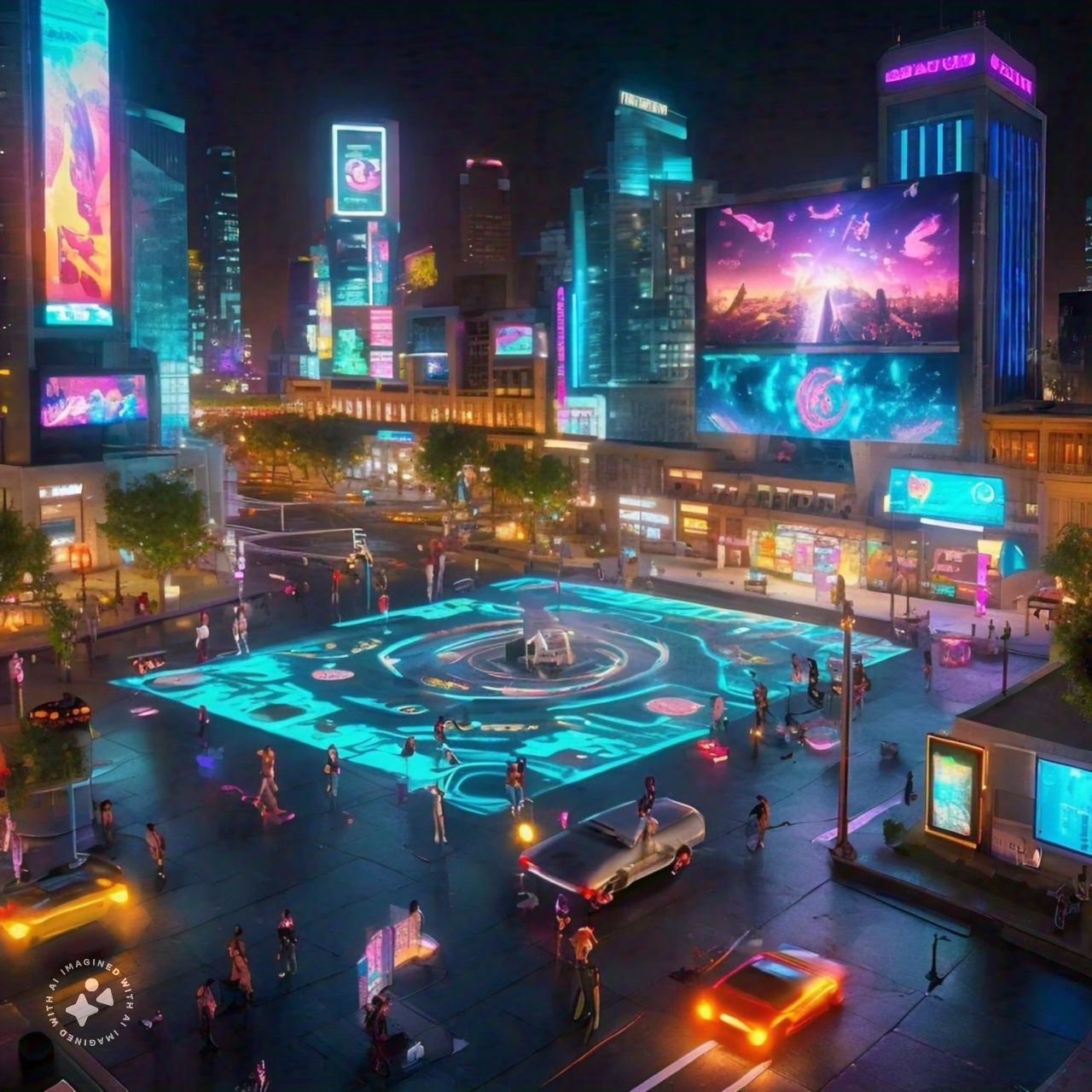Augmented Reality (AR) has swiftly transitioned from the realm of science fiction to a tangible aspect of everyday life. By overlaying digital information onto the real world, AR enhances our perception and interaction with our surroundings. This transformative technology is influencing numerous sectors, from entertainment and education to healthcare and retail, reshaping how we live, work, and play.
Understanding Augmented Reality
Augmented Reality, often abbreviated as AR, is a technology that superimposes computer-generated images, sounds, or other data onto our view of the real world. Unlike Virtual Reality (VR), which creates an entirely artificial environment, AR enhances the existing environment by adding layers of information. This blending of the physical and digital worlds offers a unique and interactive experience.
AR in Entertainment and Gaming
One of the most visible applications of AR is in the entertainment and gaming industry. Games like Pokémon GO and apps like Snapchat have popularized AR by incorporating it into everyday activities. Pokémon GO, for instance, allows players to hunt for virtual creatures in real-world locations, merging physical exploration with digital gameplay. Similarly, Snapchat’s AR filters enable users to add whimsical effects to their photos and videos in real-time.
The entertainment sector continues to innovate with AR. Concerts and live events use AR to create immersive experiences, allowing audiences to see holographic performances or interactive displays. Museums and galleries are also leveraging AR to offer interactive tours and exhibits, providing additional information and enhancing the visitor experience.
AR in Education and Training
Education is another field where AR is making significant strides. AR applications in education provide interactive and engaging learning experiences, which can be particularly beneficial for visual and kinesthetic learners. For example, AR can bring textbooks to life by displaying 3D models of historical artifacts, scientific concepts, or geographical terrains, allowing students to interact with content in a more meaningful way.
In vocational training and professional development, AR is used to simulate real-world scenarios. Medical students, for example, can practice surgical procedures using AR simulations, gaining hands-on experience without the risks associated with actual surgery. Similarly, AR can be used in industrial training to guide workers through complex machinery repairs or assembly processes, improving accuracy and safety.
AR in Healthcare
The healthcare sector is harnessing AR to improve patient outcomes and streamline medical processes. Surgeons use AR to visualize organs and tissues during operations, enhancing precision and reducing risks. AR can overlay images from MRI or CT scans onto a patient’s body, providing a more accurate guide during surgery.
For patients, AR can be used in rehabilitation and physical therapy. AR applications can gamify exercises, encouraging patients to complete their routines and track their progress. Additionally, AR is used in mental health treatments, such as exposure therapy for phobias, where patients are gradually exposed to their fears in a controlled, augmented environment.
AR in Retail and E-commerce
The retail and e-commerce sectors are rapidly adopting AR to enhance the shopping experience. AR allows customers to visualize products in their real environment before making a purchase. For instance, furniture retailers like IKEA offer AR apps that enable customers to see how a piece of furniture will look in their home, ensuring the right fit and style. Similarly, cosmetic brands provide AR tools that allow customers to try on makeup virtually, helping them choose the right shades and products.
AR also enhances in-store experiences. Interactive displays and smart mirrors can provide personalized recommendations and information, creating a more engaging and informed shopping experience. This integration of AR in retail not only improves customer satisfaction but also drives sales by reducing return rates and increasing conversion rates.
AR in Navigation and Travel
Navigation and travel are also benefiting from AR technology. AR navigation apps overlay directions and information onto the real-world view through smartphones or AR glasses, making it easier to find your way around. These apps can provide turn-by-turn directions, highlight points of interest, and offer real-time updates on traffic conditions.
In the tourism industry, AR is used to enhance the visitor experience. Tourist attractions can offer AR guides that provide historical context, fun facts, and interactive elements, making tours more informative and engaging. AR can also bring historical sites to life by reconstructing ancient buildings and events, providing a glimpse into the past.
The Future of AR: Challenges and Opportunities
While AR offers immense potential, it also faces several challenges. Technical limitations, such as battery life, processing power, and display quality, can affect the user experience. Privacy concerns are another significant issue, as AR applications often require access to sensitive data and continuous monitoring of the user’s environment.
Despite these challenges, the future of AR is promising. Continued advancements in hardware and software will address many of the current limitations, making AR more accessible and user-friendly. Integration with other emerging technologies, such as artificial intelligence and the Internet of Things (IoT), will further enhance AR capabilities, opening up new possibilities and applications.
Conclusion
The rise of Augmented Reality is transforming various aspects of our daily lives, from how we entertain ourselves and learn new skills to how we shop and navigate the world. As AR technology continues to evolve, its applications will become even more diverse and integrated into our daily routines. By enhancing our interaction with the physical world through digital augmentation, AR is poised to revolutionize the way we experience and engage with our surroundings.
